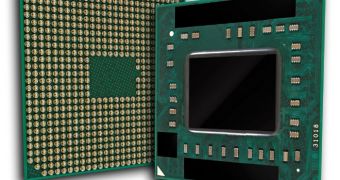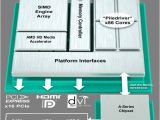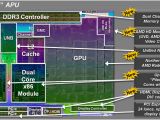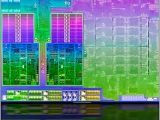The time is finally here: Advanced Micro Devices has officially launched the second-generation A-Series accelerated processing units, codenamed Trinity.
AMD had a bunch of laptop processors as part of the previous year's APU collection, but the number of design wins wasn't exactly high.
Now, though, the Sunnyvale, California-based company may just give Intel a reason to sweat.
The signs have already been appearing really, with HP even giving AMD-based “ultrabooks” the Sleekbook moniker.
Intel may own the Ultrabook brand, but not the design for super-thin laptops, which means that Trinity has free reign to try and charm whatever notebook makers AMD wants.
There are two ultrathin notebook APUs in the collection, called A10-4655M and A6-4455M.
The former uses 25W to power four Piledriver CPU cores (2.0 GHz base clock speed, 2.8 GHz Turbo Core), the DDR3 memory controller, 4MB cache memory and the Radeon HD 7620G built-in graphics (384 cores, 360 MHz / 497 MHz frequency).
The latter is a dual-core processor at 2.1 GHz / 2.6 GHz and boasts 2 MB cache and the HD 7500G GPU (256 cores, 327 MHz / 424 MHz), but makes do with only 17W of power.
Besides these two, AMD's Trinity APU series includes three mainstream laptop parts, called A10-4600M, A8-4500M and A6-4400M.
The A10-4600M is a 35W quad-core at 2.3 GHz / 3.2 GHz. It is equipped with the Radeon HD 7660G GPU (384 cores, 497 MHz / 686 MHz) and 4 MB cache. The chip also happens to be the one that got benchmarked last month.
The second processor, A8-4500M, is also a 4MB quad-core on 35W, but with 1.9 GHz / 2.8GHz speed and the HD 7640G GPU (256 cores, 497 MHz/ 655 MHz).
Finally, the dual-core, 35W A6-4400M has 1 MB cache, 2.7 GHz / 3.2 GHz clocks and the HD 7520G graphics (192 cores, 497 MHz / 686 MHz).
We expect, and hope, that notebook makers will be less shy about choosing to base their devices on AMD's units. Being “familiar” with Intel can only justify so much.
Besides, if companies brought themselves to use Llano, they have no excuse not to get Trinity, considering the 29% CPU performance advantage and the graphics performance improvement of up to 56%. Add to that the lower TDPs and, overall, the performance per watt is doubled.
To put things in perspective, Trinity Notebooks should be able to last for up to 12 hours on a single battery charge, while having better graphics prowess than Intel's Ivy Bridge HD 4000 GPU. And that's without application optimizations (Adobe Photoshop CS6, WinZIP 16.5, VLC Media Player, etc.) or plugins in Chrome, Firefox and IE9 for AMD Steady Video technology (smoother online video streaming, obviously).
If things work out as we hope they will, we'll be at the upcoming AMD Fusion Developer Summit next month (June 11-14, 2012). Maybe then we'll see AMD Steady Video, AMD Quick Stream (prioritizes video streaming on PC systems), True HD video chat (with up to four people at once) and the AMD Video Converter in action.
Of course, we fully expect some AMD Eyefinity and AMD Radeon dual graphics demos too (up to 75% better performance when a discrete graphics card is added to an APU-powered laptop).
Lenovo, Samsung, HP, Acer, Toshiba, Sony and Samsung all have Trinity laptops ready or in the pipeline. We'll cover them as they appear, so stay tuned.

 14 DAY TRIAL //
14 DAY TRIAL // 


